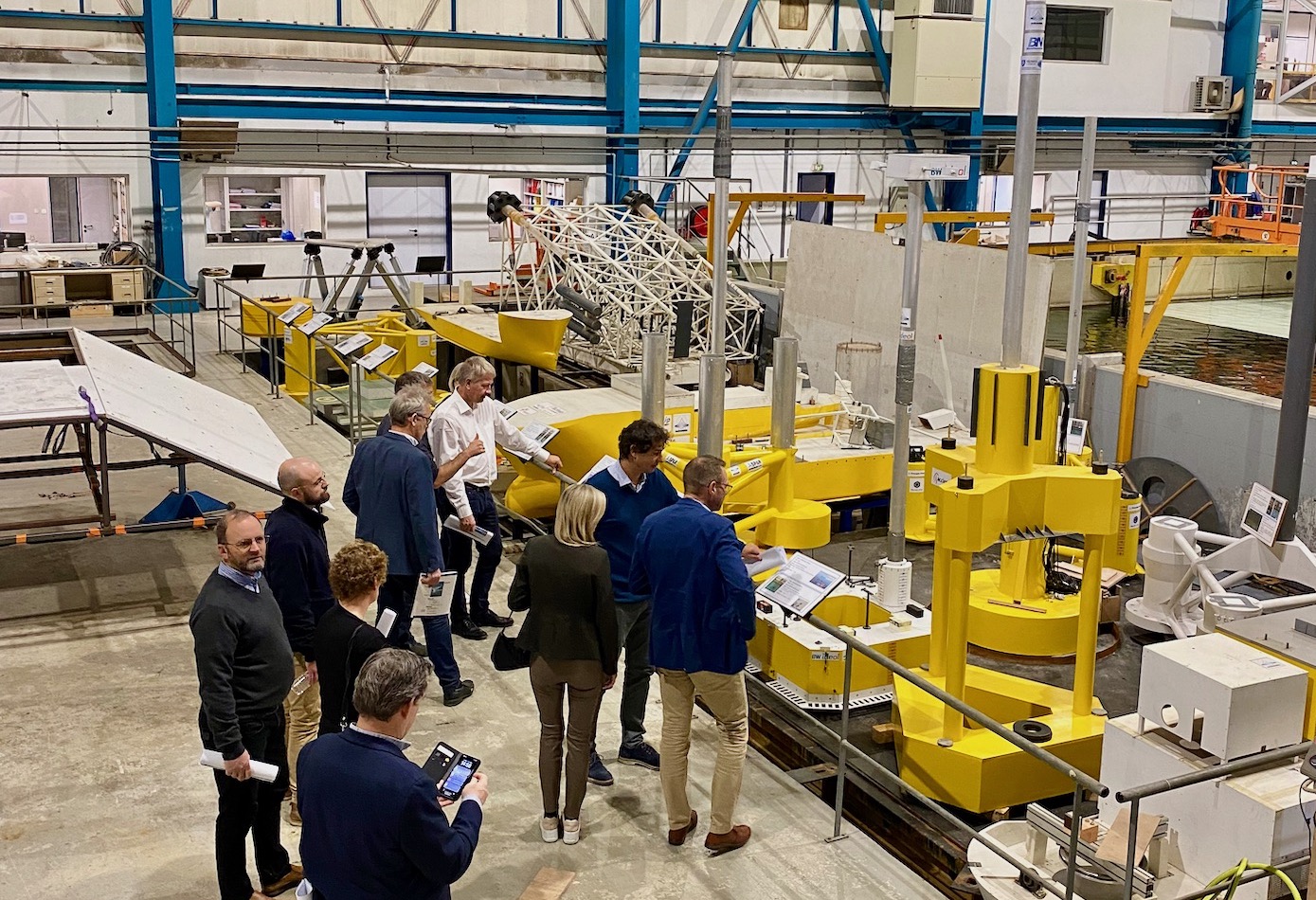Models of offshore wind foundations, oil rigs and vessels in the Océanide indoor test basin were carrying stickers with logos from National Oilwell Varco, Aker Solutions, BW Ideol, Technip, and Equinor, in addition to other international offshore players.
“We have had the pleasure of serving some top Norwegian companies,” says Benjamin Bailly, CEO of Océanide, a private facility offering physical model testing services for offshore and coastal developments.
For close to 30 years Océanide has performed 400 tests campaigns at their facilities near Toulon.
“The transfer of knowledge from model testing to engineering and the synergy between coastal and offshore engineering ensure that Océanide’s team has strong expertise in hydraulics and hydrodynamics as well as in-depth physical and numerical modelling skills,” says Bailly.
Engineering services include design of coastal and port protective structures, mooring and anchoring of floating structures, installation of subsea modules and pipelines, dredging and optimization of channel depth, water quality and hydro-sedimentary impact studies.
“More specifically, the campaigns are mainly for renewables, fish farming, oil and gas industry and the navy. Our facility is particularly well adapted for floating offshore wind turbine model testing,” says Bailly.
WELL-KNOWN CONCEPTS
For Christian von der Ohe, RD&I Manager at GCE NODE, touring Océanide’s facilities brought back fond memories of working with marine operations and offshore installation, as well as providing equipment for newbuilds and upgrades for older rigs.
“I am impressed by Océanide’s 30 years of experience and to see well-known offshore concepts which several of us have worked on and that are familiar to most GCE NODE companies. The capabilities of the Océanide sea basin certainly enable customers to execute a large variety of basic and applied research on marine structures, operations, and installations,” says von der Ohe.
“I was surprised by the wide range of ocean wind projects already tested here using smart and ingenious methods. The sea basin is an excellent tool for investigating existing or future challenges in marine technology,” says von der Ohe.
Ann Marchioro, Project Manager at GCE NODE, was also impressed.
“The test models displayed comprised in many ways a museum which illustrated how the offshore market has advanced over the past 30 years. It was particularly rewarding to see the transition to offshore wind structures. Océanide’s work holds great promise for the realization of offshore wind as a new source of renewable energy,” says Marchioro.
OCEAN SPACE CLUSTER
During the visit in Southern France, the GCE NODE cluster administration also met with Pôle Mer Méditerranée, a cooperating cluster in the ocean space. Comprising 470 companies, the cluster runs 46 structuring projects with a total budget of 1,800 million Euro.
“We are looking to expand our collaboration with Pôle Mer Méditerranée. The cluster has some highly relevant projects. We are keen on introducing some of our GCE NODE companies to the French companies, and Pôle Mer Méditerranée is equally keen on introducing some of their companies to ours,” says von der Ohe.




